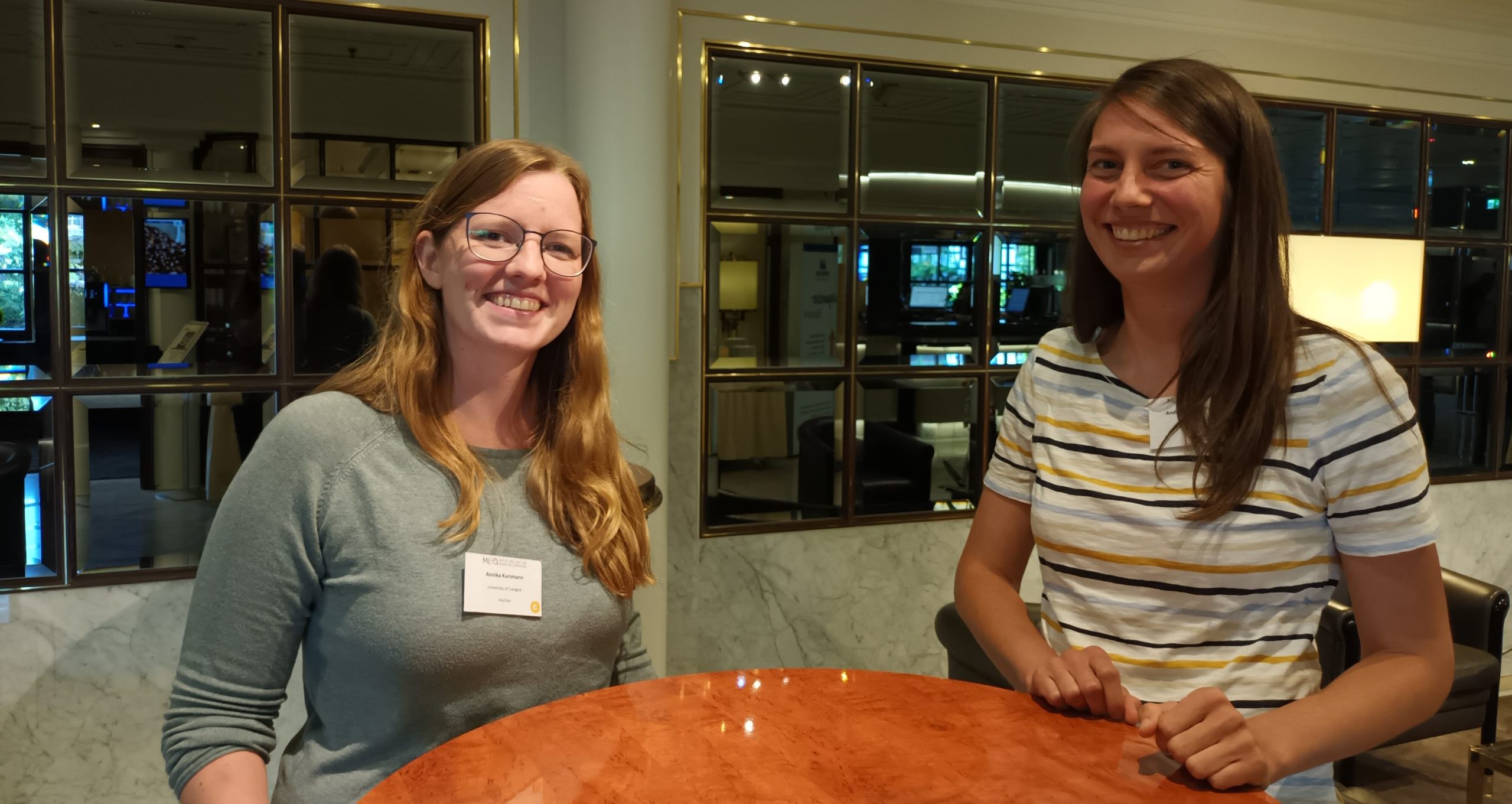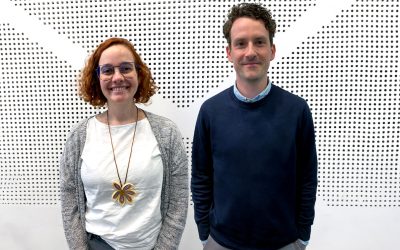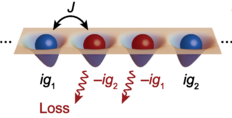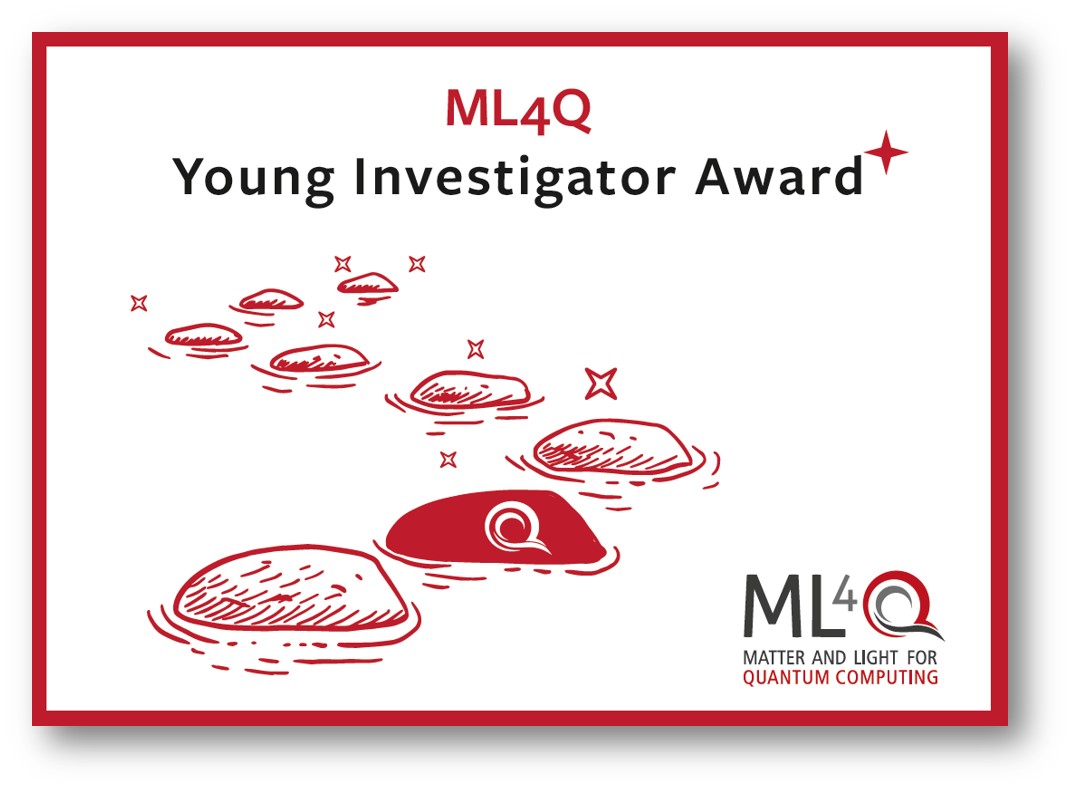One year after the ML4Q Young Investigator Award
An interview with Andrea Bergschneider and Annika Kurzmann

Last November, the cluster awarded six early-career researchers the ML4Q Young Investigators Award, recognizing their noteworthy contributions to ML4Q. This acknowledgment specifically commends their accomplishments that require collaborative efforts across various sites.
Curious about the recent developments in their collaborative journey and the impact of the ML4Q Young Investigators Award, we reached out to Andrea and Annika for their perspectives.
Andrea, how has 2023 been for you so far? Any career or research developments you can share?
I started my project in January 2023 and was extremely lucky to find a very motivated PhD student with whom I am have been setting up the lab during the last months. Within the ML4Q collaboration, we got a lot of support for fabricating our samples and by now, we have a functional and precise setup where we build our heterostructure. We just cooled down our first sample and started measuring and I hope that we will soon see first results.
What kind of heterostructure were you able to establish and what will you be studying on them exactly?
We recently built our first gateable sample containing monolayer TMD, a semiconductor that can host excitons. We want to use the electrical gates to manipulate the excitons. In particular, what we would like to see is that can use them to confine excitons, and control their emission energy in order to use them as tunable quantum emitters.
How about you, Annika? How did this year go for you?
Very good! On the 1st of August, I began my position as a Junior Professor at the University of Cologne, where I am currently establishing my laboratories and an independent research group. In our Aachen laboratories, we have incorporated an hBN emitter between two graphene flakes to enable electrical control over the emitter. Utilizing this matter-light interface, we are exploring the charge dynamics between the emitter and the graphene. Our initial findings indicate that this interaction can boost the emitter’s brightness by a factor of five, a crucial advancement for the potential utilization of these emitters as spin-photon interfaces in quantum computation.
How have you been going about your cooperation? And how did you decide to use the award funds?
With Annika I am regularly discussing topics ranging from brainstorming about sample geometries to sharing pieces of advice and insights on fabrication of gate-structures which is one of the many common themes in our project. I personally experience the discussions as very fruitful and inspiring and I am always eager to learn from Annika.
Within our ML4Q project, the collaboration is essential. We established a regular meeting within all the involved people. And we have a few collaborative subprojects that we are regularly discussing in smaller groups.
I spent the award funds on a handful of physics books on specialized topics like nanofabrication. This helps me also for teaching important topics to my students – topics that are beyond the physics curriculum that we have in Bonn. In addition, I have used the funds to participate at several conferences to which I would have otherwise probably not gone and I purchased a few smaller items for the lab.
Once a month, we hold a meeting to discuss our project, during which we engage in productive discussions about fabrication and measurements. I always look forward to meetings with Andrea to discuss project or device ideas, these discussions are always very fruitful and important for our project.
I used the award funds for equipment for my new, empty labs in Cologne.
The award being part of your involvement in ML4Q was intended to offer you a significant stepping stone in your career towards academic independence. Do you think this goal was achieved? Did you identify another instrument that could accelerate this process?
I believe that a successful grant application is one of – if not the most standard way towards showing academic independence. Being a member of ML4Q and most importantly having an own project withing the excellence cluster including funding for equipment and an own PhD student is therefore a very important step in my academic career. The Young Investigator award is important for others to see the achievement of holding such an independent project as a young researcher. Within ML4Q, the award certainly made me achieve this goal; the future will show whether I achieve this goal also achieved outside of ML4Q.
My academic independence was achieved through the junior professorship in the last year, perhaps because of the award 😉
I believe it would be beneficial to establish more connections with other early-career researchers who are also striving for academic independence. This network would provide an opportunity to discuss common challenges, problems and career progression.
Any piece of advice to early-career reseachers who are seeking academic independence?
I think, when one seeks for academic independence, one needs to start developing own interests early on and dare to think outside of the box. But it is also very important to have people around that are supportive. For instance, it is crucial to find a postdoc advisor that is supporting the development own ideas and initiatives.
I believe a supervisor who provides guidance and advice while allowing you to make your own decisions and encourages independence in your projects is important.
News involving ML4Q Young Investigators
Looking back at the ML4Q Young Investigator Award – an interview with Gláucia Murta and Julian Schmitt
Looking back at the ML4Q Young Investigator Award An interview with Gláucia Murta and Julian SchmittIn November 2023, the cluster awarded six early-career researchers the ML4Q Young Investigators Award, recognizing their noteworthy contributions to ML4Q. This...
Pint of Science brings basic scientific questions to life in Cologne pubs
Pint of Science brings basic scientific questions to life in Cologne pubs Pint of Science, an annual series of events hosted by the scientific community in Cologne, kicked off on May 13th at the Lost Level bar with talks by scientists from diverse backgrounds. These...
Topological states of light and matter in systems with trivial band structures
Topological states of light and matter in systems with trivial band structures Topological states of light and matter don't always require complicated lattice band structures. In their joint work, ML4Q members Julian Schmitt and Stefan Linden were able to...



